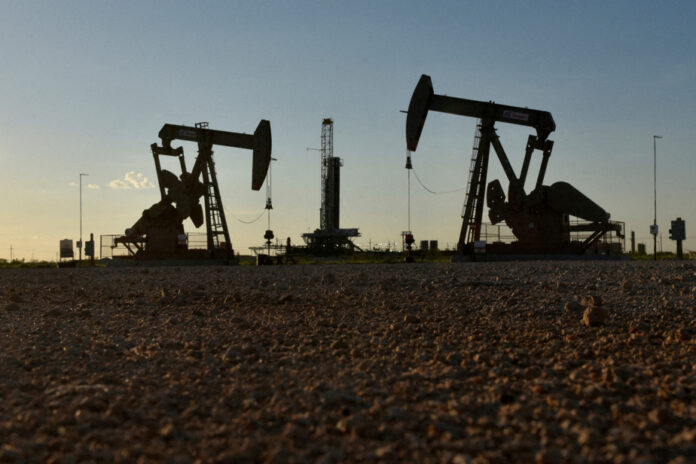(London) Oil prices fell on Thursday, with fears about the economy in China and the United States, and therefore about demand, still taking precedence over geopolitical fears after the release of new indicators.
Around 6 a.m. ET, a barrel of North Sea Brent for January delivery was down 0.32% at $80.92.
Its American equivalent, a barrel of West Texas Intermediate (WTI) for delivery in December, lost 0.35% to $76.39.
“The market has digested recent reports from the International Energy Agency (IEA) and OPEC,” the Organization of the Petroleum Exporting Countries, “both of which forecast an increase in demand,” but Investors “still fear a recession which could limit consumption”, comment analysts at Energi Danmark.
However, overall demand growth is expected to slow to 930,000 barrels per day in 2024, driven by energy efficiency gains, the rise of electric vehicles, and the effects of the post-COVID economic rebound. 19 beginning to dissipate, according to the IEA.
At the same time, “concerns about American and Chinese demand” are heightened this week, underlines James Harte of Tickmill.
In the United States, the inflation rate fell significantly in October, to 3.2% year-on-year, compared to 3.7% in September, thanks in particular to the drop in gasoline prices at the pump, according to the CPI index published Tuesday.
These figures “following weaker than expected employment data at the start of the month, (have) reinforced the idea that the economy is starting to cool” in the country, continues Mr. Harte.
“In China, data this week showed new housing prices fell for the fourth consecutive month, weighing on the demand outlook,” says the analyst.
“Any tightening (in the market) is expected to evaporate in the first quarter of 2024, as Chinese growth weakens,” ANZ analysts argue, which “represents a challenge for the OPEC alliance” (OPEC and its allies).
According to ANZ, Saudi Arabia will “extend its production cuts until 2024 if it wants prices to stay above $80 a barrel.”
Earlier this month, Saudi Arabia and Russia reaffirmed that they would maintain their production and export cuts until the end of the year, amounting to 300,000 barrels per day of supply of oil and petroleum products for Russia and a production cut of one million barrels per day for Saudi Arabia.
These reductions complement the reductions introduced since the beginning of May and in force until the end of 2024 by nine producers, including Riyadh, Moscow, Baghdad and Dubai, for a total of 1.6 million barrels daily.
The next ministerial meeting of OPEC members is scheduled for November 26 in Vienna, headquarters of the alliance.















